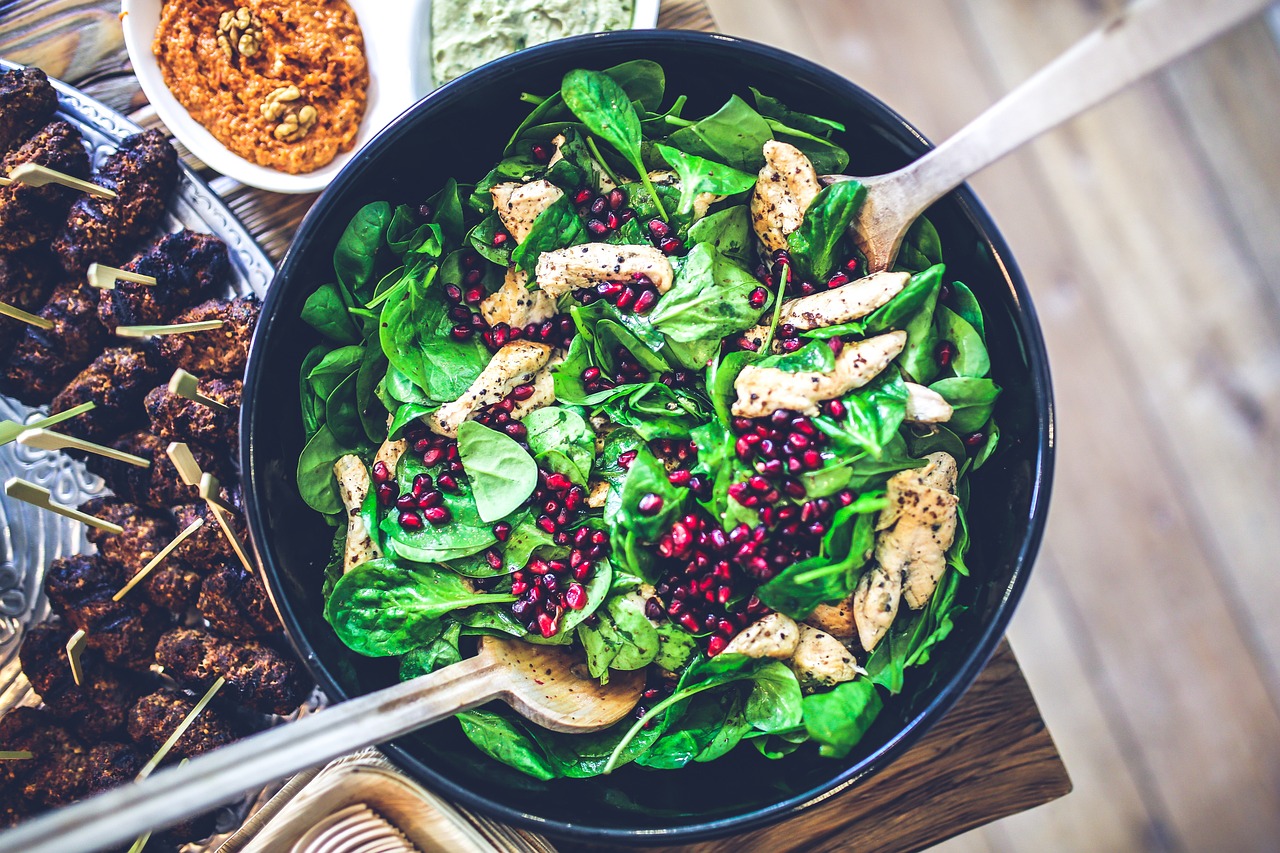Backstory how I have gotten to value a balanced diet. Since 2019, I’ve been diving into the world of nutrition. It all started when a challenging event took a toll on my health, leading me to a breaking point where I felt like one shoe had already been tossed aside. To navigate through this, I embarked on extensive research and experimentation, a journey spanning multiple years. Initially, my motivation was just to survive, but then an unexpected twist occurred—my health started improving dramatically, and I became fascinated by the intricacies of nutrition. More than just restoring digestion and energy, a remarkable transformation unfolded: my mental well-being received a significant boost. I was astounded by the disappearance of depression, panic attacks, and anxiety, which I had previously considered a part of who I was. This convergence of physical and mental growth motivated me to dig deeper into nutrition, eagerly absorbing information and knowledge.
Fast-forward to today—after navigating through stricter diets—I’ve finally found a sustainable solution. The days of excessive restriction and self-punishment are behind me. I’ve reached a point where I can enjoy a variety of foods without being controlled by cravings. This newfound balance is guided by simple principles that free me from the chore of calorie counting. These principles make sense and are logical. I’m determined to explain the effectiveness of balanced meals.
What does a balanced diet mean?
A balanced meal refers to a type of meal that includes a combination of various nutrients in appropriate proportions to provide optimal nourishment for the body. These nutrients typically include proteins, carbohydrates, fats, and fibers. The goal of a balanced meal is to provide a steady and sustained release of energy, maintain stable blood sugar levels, and support overall health and well-being.
Each nutrient in a balanced meal serves a specific purpose:
- Proteins: Protein is essential for building and repairing tissues, supporting muscle growth, and maintaining a strong immune system. Good sources of protein include meat, poultry, fish, eggs, dairy products, legumes, nuts, and seeds.
- Carbohydrates: Carbohydrates are for the source of energy. They are broken down into glucose, which fuels various bodily functions and activities. Complex carbohydrates, found in whole grains, fruits, vegetables, and legumes, provide a steady release of energy and help maintain stable blood sugar levels.
- Fats: Healthy fats are a good source of energy. Fats are super important for brain function, hormone production, and the absorption of fat-soluble vitamins (A, D, E, and K). Sources of healthy fats include avocados, nuts, olive oil, and fatty fish.
- Fibers: Dietary fibers are important for digestive health, promoting regular bowel movements, and maintaining a feeling of fullness. Fiber-rich foods include whole grains, fruits, vegetables, legumes, and nuts. Fiber is also food for our intestinal microbiome.
Why should our food be balanced?
Balanced food plays a crucial role in maintaining stable blood sugar levels. For instance, when I start my day with a healthy fruit juice on an empty stomach, I strangely feel even hungrier afterward. Why? Despite the calories, the meal lacks balance—it’s mostly carbohydrates that quickly enter the bloodstream. But it’s incomplete, lacking the fibers, fats, and proteins that act as a buffer between the food and the intestines.1,2
So why don’t carbohydrates alone satisfy and instead trigger more cravings? To understand this, let’s look at the consequences of a rapid rise in blood sugar. High blood sugar in delicate blood vessels can be dangerous. Sugar crystals damage blood vessels, causing inflammation. Diabetics, for example, often experience vision problems as the small blood vessels in their eyes are affected.3 To counter this, the body lowers blood sugar levels, accomplished by insulin, a hormone from the pancreas. This is a normal response after every meal. The issue arises when the body deals with rapidly absorbable carbohydrates, like the fruit juice on an empty stomach. The body has to produce a lot of insulin quickly to prevent a spike in blood sugar. This surge of insulin does its job—lowering blood sugar and storing excess glucose in muscles and the liver. However, the rapid insulin surge leads to a slight drop in blood sugar (reactive hypoglycemia4).
Drop in blood sugar brings challenges even to healthy adults.
Intense hunger, anxiety, and low energy. A nap or a cup of coffee may seem like a solution. The issue with low blood sugar is that our brain mainly relies on glucose through the bloodstream for optimal function. This relationship only works when blood sugar levels are normal. Understanding this mechanism and incorporating it into our lifestyle is vital to control food cravings. This is important not just for diabetics, but for everyone.5 Fluctuating blood sugar levels affect our sensitivity to insulin, linked to type 2 diabetes and various health problems like migraines, cognitive issues, acne, premature aging, depression, digestive problems, heart disease, fatigue, poor sleep, infertility, insulin resistance, fatty liver, wrinkles, and cataracts. This is why many turn to diets like keto, carnivore, and low-carb diets. These limit carbohydrates to control insulin fluctuations. Breaking this cycle offers the benefits of caloric control and improved well-being. It’s also why intermittent fasting is popular—simply abstaining from food sidesteps the issue.
Tricks for steady energy.
In essence, crafting meals with a mix of fiber, protein, fats, and a controlled amount of carbohydrates is the key. Starting with carbohydrates on an empty stomach isn’t effective—they’re rapidly absorbed. My personal mantra captures this: “Save dessert for dessert!” This mantra makes sense.
If I anticipate pasta or ice cream, I focus on the salad before the main course. This fiber-rich salad acts as a buffer, slowing down blood sugar absorption. When time or motivation is lacking for a salad before a meal, I opt for a simple yet satisfying choice: two carrots or celery stalks with sugar-free peanut butter or hummus. To counter overindulgence, I use these strategies:
Taking a brisk 10-15 minute walk.6
Completing a planned workout. 7
Consuming a tablespoon of diluted apple cider vinegar. 8
Opting for a savory breakfast to maintain stable glucose levels.9
If these strategies fail to curb cravings and I succumb to excessive hunger or sweet temptations, it usually means I need more water or protein.10 Poor sleep could also be a factor.
Changing your eating habits might be hard, but being with poor health is much harder. So pick your hard wisely.
References:
- Continuous Glucose Profiles in Healthy Subjects under Everyday Life Conditions and after Different Meals – https://www.ncbi.nlm.nih.gov/pmc/articles/PMC2769652/
- Consuming Carbohydrates after Meat or Vegetables Lowers Postprandial Excursions of Glucose and Insulin in Nondiabetic Subjects – https://pubmed.ncbi.nlm.nih.gov/30381620/
- Controlled blood sugar improves the eye’s accommodative ability in type-1 diabetes – https://www.ncbi.nlm.nih.gov/pmc/articles/PMC8115693/
- Postprandial glycaemic dips predict appetite and energy intake in healthy individuals – https://www.nature.com/articles/s42255-021-00383-x
- High glucose spikes are common in ‘healthy’ people. – https://www.sciencedaily.com/releases/2018/07/180724174233.htm
- Advice to walk after meals is more effective for lowering postprandial glycaemia in type 2 diabetes mellitus than advice that does not specify timing: a randomised crossover study – https://pubmed.ncbi.nlm.nih.gov/27747394/
- Exercise, GLUT4, and skeletal muscle glucose uptake – https://pubmed.ncbi.nlm.nih.gov/23899560/
- Vinegar supplementation lowers glucose and insulin responses and increases satiety after a bread meal in healthy subjects – https://pubmed.ncbi.nlm.nih.gov/16015276/
- Restricting carbohydrates at breakfast is sufficient to reduce 24-hour exposure to postprandial hyperglycemia and improve glycemic variability – https://pubmed.ncbi.nlm.nih.gov/30968140/
- Protein, weight management, and satiety – https://pubmed.ncbi.nlm.nih.gov/18469287/



